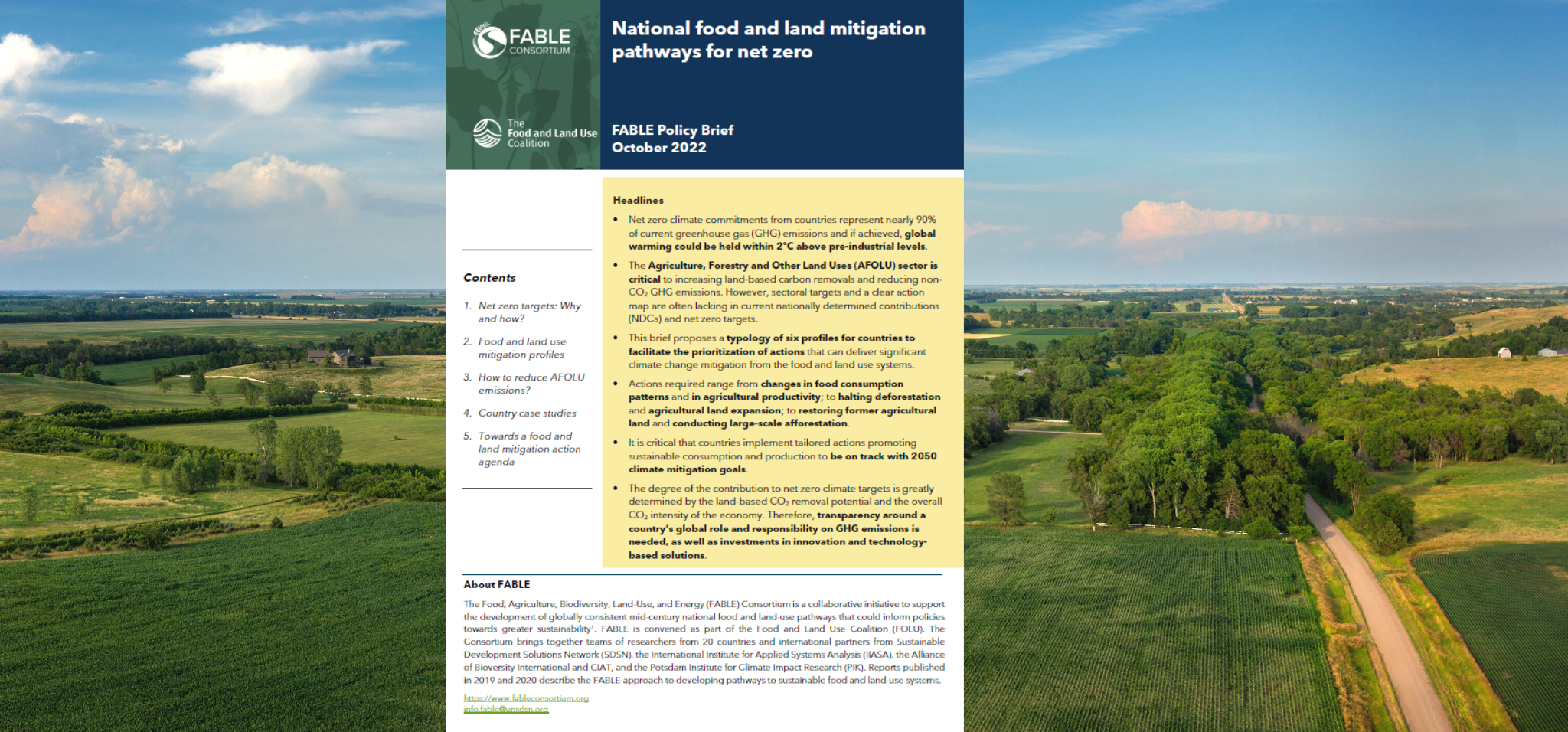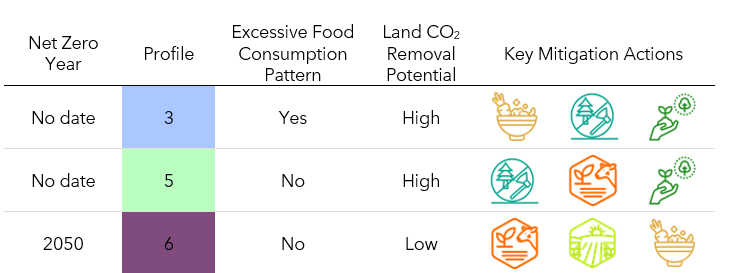
Recently, countries have committed to reducing emissions to net zero, and today national net zero climate commitments represent almost 90% of current greenhouse gas (GHG) emissions. Yet, sectoral targets and a clear action map for food and land use systems are often lacking in current nationally determined contributions (NDCs) and net zero commitments.
What actions should countries prioritize in their food and land use systems?
FABLE has developed a typology of 6 profiles to facilitate the prioritization of tailored actions toward a food and land use mitigation action agenda. The typology helps countries identify the actions that can deliver significant climate change mitigation best suited for their specific contexts. It can be reproduced and applied in the same manner over time to a country, as its food and land use systems evolve.

The input data and the thresholds can have multiple implications on the country's categorization, and the actions required for the transformation of its food and land systems. These implications can be explored using the FABLE Profile tool.
Depending on the country profile, FABLE recommends policy actions concerning the demand and supply of food and land use. These actions range from:
• changes in food consumption patterns
• shifts in agricultural productivity
• halt in deforestation and agricultural land expansion
• restoration of former agricultural land
• large-scale afforestation
FABLE has developed food and land use mitigation profile dashboards to illustrate each country’s net zero target year, profile affiliation, and recommended key mitigation actions to facilitate the implementation of tailored action.

The brief shows, that the food and land use systems can play a significant role in achieving net zero targets in countries with substantial land CO2 removal potential. But, as case studies for Argentina, Ethiopia, India, and the USA show, land-based mitigation alone might not be enough to reach net zero by mid-century.
Most countries will not be able to offset all their residual CO2 emissions through land-based removals, therefore transparent approaches to a country’s global role and responsibility for GHG emissions as well as investments in innovation and technology-based solutions are crucial.
What challenges arise from this transformation?
Zero hunger (Sustainable Development Goal 2) might still be a challenge, even in countries where the average food and/or red meat consumption is above recommended levels. In these contexts, reducing inequalities and increasing access to affordable alternatives will be needed.
Future work should further consider the role of adaptation measures in the transition to net zero. Enhancing resilience against diverse risks, weather events, and natural disasters can buffer the economic impact of immediate climate change on the agricultural sector and protect land carbon stocks. This will enable a smoother transition of the food and land systems onto a net zero trajectory.
How can FABLE support the envisaged change?
To maximize the AFOLU emission reduction potential, countries need to work together. Members of the FABLE Consortium can support more detailed national mitigation roadmaps for the food and land systems that are consistent with national priorities and context and that consider actions in other countries.
The impact of main levers on Agriculture, Food and Land Use (AFOLU) emissions for countries is assessed by using the FABLE national-to-global modeling framework. Two pathways are computed for 20 countries and six rest-of-the-world regions:
1. Current Trends (CT) pathway depicts a low ambition of feasible action toward environmental sustainability with a future based on current policy and historical trends.
2. Sustainable pathway corresponds to a high ambition towards environmental sustainability, including the limitation of global emissions from Agriculture at 4 Gt CO2e and negative land use and forestry emissions by 2050.
The FABLE framework can also be used in the future to highlight the need for more ambitious AFOLU targets depending on countries’ historical responsibilities and current capacity to implement transformations on the land use side.
Download the FABLE Profile Tool Explore the profile dashboards Read the Key Messages